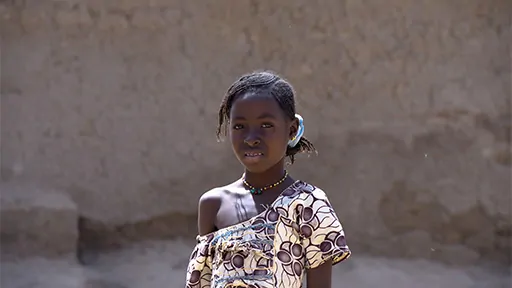Opinion Editorial Archive July, 2018: The True Cost of Education

At last month's G7 Summit there was disagreement over trade tariffs. That was not surprising. The combined gross domestic product of its member countries is around thirty-five trillion US dollars. Since a lot of that economy depends on trade among those countries, tariffs would account for a serious amount of money. At least global markets consider it a serious amount of money. They reacted negatively as soon as trading opened and they have yet to recover. Markets are complex and it would be too simple to claim that the G7 bickering was solely responsible for the negative reaction. But we can say that global markets do not consider 2.9 billion US dollars to be a serious amount of money.
There are an estimated 130 million school-aged girls in the world who do not go to school. The girl in this month's photo is one of them. In fact, before taking the photo I learned that she had never attended school. That was not surprising. She is an indigenous Fula girl from a small village near Djenné in central Mali, West Africa. I met a few other girls in her village who had also never attended school.
I don't know if she will ever be able to go to school. But I do know that some girls like her will never be able to — if they are from a similar Fulani village in the area — Koumaga. A week ago many children from that village were murdered. Reporting of the murders has so far been inconsistent. They appear to have been perpetrated by neighboring indigenous Dozo people, but the reported motivation is different across news articles: Some report that it was because of local land disputes while others state that it was in retaliation for the Fula people supporting terrorism in the area. I don't know which account — if either — is accurate.
At the end of this month a presidential election is scheduled in Mali. The security situation is now so dire that it may not take place at all. Similar, extra-judicial murders of indigenous Fula have also taken place recently in Mali, but the situation is by no means confined to Mali. The Fula people occupy a large area from West to Central Africa. Also, a week ago, Fula people were murdered in central Nigeria. That country is due to have a presidential election next year.
Of the 130 million school-aged girls who do not go to school, eight million soon may. 2.9 billion US dollars is the amount pledged at last month's G7 Summit for the education of girls. I did some arithmetic. 6% of girls like this one may soon be able to go to school. And the cost of their education is only 0.008% of the G7's gross domestic product. If the G7-countries' businesses — that make up most of the global economy — could produce that kind of return-on-investment the markets would be soaring. Instead, the pledge had no impact on global markets.
It may seem like I am trying to suggest that it is the responsibility of the G7 to educate the world's girls. No. But I would like to suggest that it is the responsibility of all of us to understand that the true cost of education can only be understood relative to the price of an uneducated population. Mali has enough natural resources to make it much more economically successful than it currently is. If it continues to neglect the education of girls like this one it will pay dearly.
If you enjoyed reading this month's opinion editorial, please consider supporting independent, advertising-free journalism by buying us a coffee to help us cover the cost of hosting our web site. Please click on the link or scan the QR code. Thanks!

